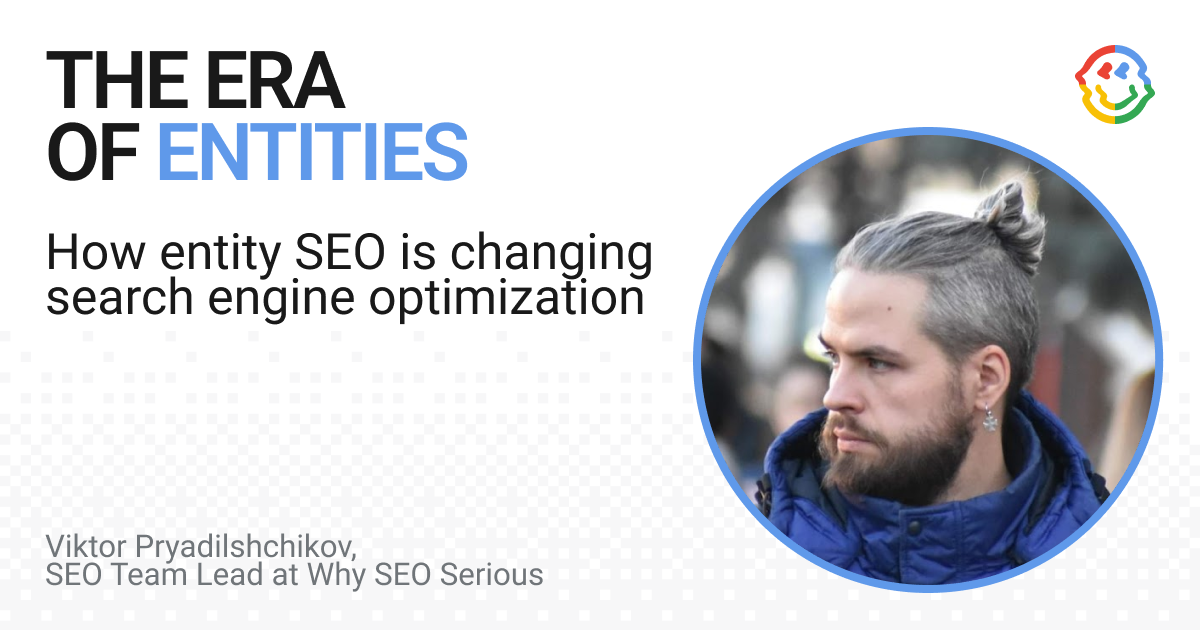Contents
A great article alone rarely drives organic growth. Both readers and search engines look for proof that the content was created by someone with real experience and expertise. When those signs are missing, reading feels like a waste of time: fewer clicks, shorter sessions, and lower rankings.
E-E-A-T — Experience, Expertise, Authoritativeness, and Trustworthiness — defines whether your content looks credible and convincing.
In this guide, we’ll break E-E-A-T down into three levels: page, author, and brand. First, how to make experience visible. Then, how to prove the author’s expertise. Finally, how to build trust at the brand and domain level.
What E-E-A-T means in practice
E-E-A-T stands for Experience, Expertise, Authoritativeness, and Trustworthiness.
It’s not a single setting or ranking factor, but a collection of signals that help both algorithms and people decide whether a source deserves trust.
Saying you’re an expert isn’t enough. E-E-A-T is built on evidence — verifiable traces of work that show the content was created by a professional.
These signals can be organized across three key levels: page, author, and brand. Each level has its own way to demonstrate credibility, summarized in the table below.
Three levels of E-E-A-T evidence
| Level | What it proves | How it’s shown | Where it’s visible |
|---|---|---|---|
| Page | Real-world experience and quality of presentation | Process details, proprietary data, before-and-after examples, source links, update date | Main content, source section, visuals |
| Author | The competence of a specific person | Bio, relevant publications, external profiles, peer review | Author card, author page, byline |
| Brand / Domain | Site reliability and reputation | About, Team, Contact, Legal, and Privacy pages; clear policies, verified reviews, industry mentions | Header and footer, trust pages, external citations |
Level 1. Page: Make experience tangible
At this level, the goal is to turn experience into a story that can be verified — not just tell what you did, but show how you solved a specific problem.
Begin by defining who you’re writing for and why.
In one short paragraph, describe the reader’s situation and what a successful outcome looks like for them.
Instead of writing, “This article is about SEO,” say, “For eCommerce owners whose sites lost visibility after a Google update, we’ll show how to recover traffic in 30 days.” That gives context and instantly answers, “What’s in it for me?”
If you’re describing a process, break it down step by step — every claim needs supporting evidence. Instead of saying, “We analyzed the website,” include a screenshot of the audit highlighting key issues. A short product demo video, a link to an open dashboard, or an excerpt from documentation — these kinds of artifacts turn abstract statements into verifiable facts.
Visuals and other media are helpful, but they should support the text, not replace it. For example, a recipe post is expected to include step-by-step photos. But without written explanations or proper alt text, search engines will struggle to understand the intent.
Artifacts like screenshots or videos can reinforce trust, but they only work when paired with strong, well-structured text.
Show clear before-and-after outcomes. Use a graph or table to highlight how a key metric — like conversion rate or traffic — changed over time, and specify the measurement period.

Trust is built on honesty. Always include the date of the last update and list your sources — research papers, official documents, expert quotes.
If there are limitations or controversial points, acknowledge them openly. It’s better to mention a gap yourself than let the reader notice it.
Good structure is a direct SEO asset. Keep these basics in mind:
- Add a clickable table of contents with anchor links.
- Use H2 and H3 headings consistently; don’t skip levels (for example, don’t jump from H2 to H4).
- Include captions and alt text for all images.
- Avoid intrusive banners and pop-ups that block reading.
- Add internal links to related cases, products, or documentation.
- Audience, context, and success criteria are clearly defined.
- The process is described step by step, with evidence for each stage.
- Artifacts are included: screenshots, tables, videos, and source links.
- Results are measurable: before/after format with metrics, period, and limits.
- Transparency: update date, source list, and disclaimers if needed.
- Structure: TOC, H2/H3 hierarchy, captions, alt texts, clean forms.
- Internal links lead to relevant cases, product pages, or documentation.
Level 2. Author: Make expertise verifiable
Any article gains credibility when it’s backed by a real, competent person. The goal is to make the author not just a name on the page but a living proof of expertise — all signals gathered in one place.
Start by creating a dedicated author page — a compact portfolio that includes:
- Job title and area of specialization.
- A real photo.
- Key projects, publications, or certifications with links.
That’s how abstract “expertise” turns into verifiable facts.
To establish authority, show proof of the author’s real-world experience. For example, if it’s a cardiologist, their name should be easily searchable and associated with positive mentions on reputable websites — not mixed up with unrelated topics.
Authority grows when expertise is traceable — consistent, relevant, and easy to verify.
For sensitive topics such as finance or medicine, trust increases when a reviewer is listed alongside the author. The author ensures logical flow and accurate data, while the reviewer validates the methodology and facts.
Include names, titles, and review dates for both — it signals internal quality control.
Algorithms value signal consistency. Use the same spelling of names and titles across the entire site, and keep profile links stable.
On an article page, a short author summary is enough — who they are and why they’re qualified to write this piece. Move everything else (full bio, education, credentials) to the dedicated author page.
- The author card on each article includes the name, title, specialization, and photo.
- External proof exists: publications, certificates, and projects.
- Dedicated author page lists all materials and contact links.
- Roles are separated: reviewer and review date are included when relevant.
- Data is consistent across pages (name, title, company, links).
- Bio is factual and objective — no self-promotion, just verified background, education, and qualifications.
Level 3. Brand and Domain: Build trust systematically
Everything is connected — trust in a single article starts with trust in the entire website.
Trustworthiness is the foundation of E-E-A-T. If it’s missing, all other strengths lose weight. Even the best expert article won’t perform if the site is associated with fraud or unreliable behavior. Conversely, a trustworthy domain can offset weaker points elsewhere.
Brand trust is the backbone of E-E-A-T. Without it, even solid expertise doesn’t convert into credibility.
The core pages that create trust usually include:
- About — your mission, who you are, what you do, and for whom.
- Team — key specialists with photos and roles.
- Contact and Legal / Privacy — full business details, privacy policy, and clear terms.
- Niche-specific pages depending on the business type: for eCommerce, it’s the Cart or Shipping & Returns page; for B2B companies, the Case Studies section.
The claims you make on your About page must be supported by evidence, not just within that section, but across the whole site. Depending on your industry, this proof can include:
- Clear payment, refund, and service policies visible in the header or footer.
- SLA documents and methodology descriptions for service providers.
- Certificates and audit reports that can be independently verified.
- Technical reliability, including HTTPS encryption.
- Clean site history with no security incidents flagged by search engines.
- Accurate legal wording that matches your business type.
Even with all documents in place, conflicting or outdated policies, or an unsecured HTTP protocol, can undermine user trust.
Formal guarantees work best when backed by real examples:
- Reviews with names and verified sources.
- Case studies with concrete data and results.
- Client or partner logos (with permission).
- Mentions in industry media with active links.
- “About,” “Team,” “Contact,” and “Privacy” pages are up-to-date and easy to find.
- Legal and policy links are accessible within one click from the header or footer.
- Social proof is verifiable: sourced reviews, data-backed case studies, and partnerships.
- Schema markup for Organization, WebSite, and BreadcrumbList is set up and valid.
- The site loads fast, and important sections are clearly visible and accessible.
How to record evidence for search engines
Search engines should read the same facts and connections that a human sees. To achieve this, you need a clear data structure, consistent entities, and predictable content formatting.
The best way to mark up data is with JSON-LD. It is reliable and easy for search engines to understand. The main rule is simple: mark up only what is actually present on the page, and make sure it matches the visible text exactly.
Data should also stay consistent across the entire site. For authors, this means:
- The author’s name is written the same way everywhere.
- Company name, address, contacts, and legal details match across profiles.
- The same URL is used for the author page and the “About” section.
Pay attention to how these entities connect. An article should link to its author, the author should be linked to the organization, and the organization should appear as the publisher. Add social profiles through the sameAs property so that separate signals form a complete picture for search engines.
Minimize technical barriers. Important information should never be hidden behind delayed tabs or lazy loading. Text and images that confirm expertise must be visible on initial load and accessible for crawling. Lazy loading is acceptable only if it does not block indexing — for example, when prerendering is correctly configured and search engines receive the full version of the page.
Keep the site stable. Content blocks should not shift while loading, ads and widgets should not cover the main text, and navigation should remain consistent and predictable. This creates a positive user experience, which is also a signal of quality.
What to mark up and where:
- Article: headline, author, datePublished, dateModified, publisher, image, and if applicable, citation or references — applied to the article page.
- Person: name, jobTitle, affiliation, url, image, sameAs — added to the author card and author page.
- Organization: name, url, logo, contactPoint, sameAs — used on the “About” page and in the footer.
- WebSite: name, url, publisher — applied to the site template.
- BreadcrumbList: itemListElement — added to key sections to clarify hierarchy.
- Optional: FAQPage, Review, Product — only if such blocks are actually present on the page.
Build a trust system for your content
We’ll implement E-E-A-T standards: from author profiles and brand transparency to technical markup.
Diagnostics: where trust signals get lost
Sometimes part of your proof gets lost along the way, and the content looks weaker than it actually is. To see where that happens, look at the page from two perspectives: as a reader and as a search engine.
What to check first:
| Signal | What should be visible right away | What usually needs fixing |
|---|---|---|
| Sources and date | A list of sources and an “Updated on…” field at the end of the article | Add a “Sources” section and a date field to the template |
| Author | Clickable name, short bio, working external links | Create an author card and author page, link to profiles and publications |
| Trust pages | About, Contact, Legal, and Privacy are accessible from the header or footer | Add links to navigation and simplify text |
| On-page artifacts | The process and at least one verifiable artifact: a labeled screenshot or table with raw data | Add artifacts, name the metric, time period, and limitations |
| Markup and consistency | Valid JSON-LD, author and organization data match what is visible on the page | Link Article ↔ Person ↔ Organization and unity names and dates |
| Structure and speed | Logical H2/H3 order, table of contents, page does not shift while loading | Add anchors, fix CLSI/CP, ensure key content is not hidden |
Go through the table from top to bottom and note where confirmations are missing. If several points are incomplete, start with the first three: sources and date, author, and trust pages.
The article is ready when every element in the left column is visible without searching and matches what is defined in the markup. If something does not align, that signal is considered lost.
Conclusion
E-E-A-T works only as a complete system where the page, the author, and the brand support each other. The page makes experience visible, the author confirms expertise, and the brand builds the foundation of trust.
To keep E-E-A-T consistent, make evidence collection a continuous process. New materials should be published with artifacts, sources, and author data already in place. Older ones should be updated and expanded with verifiable facts.
This is how you build trust that both search engines and readers can recognize in the same way.





